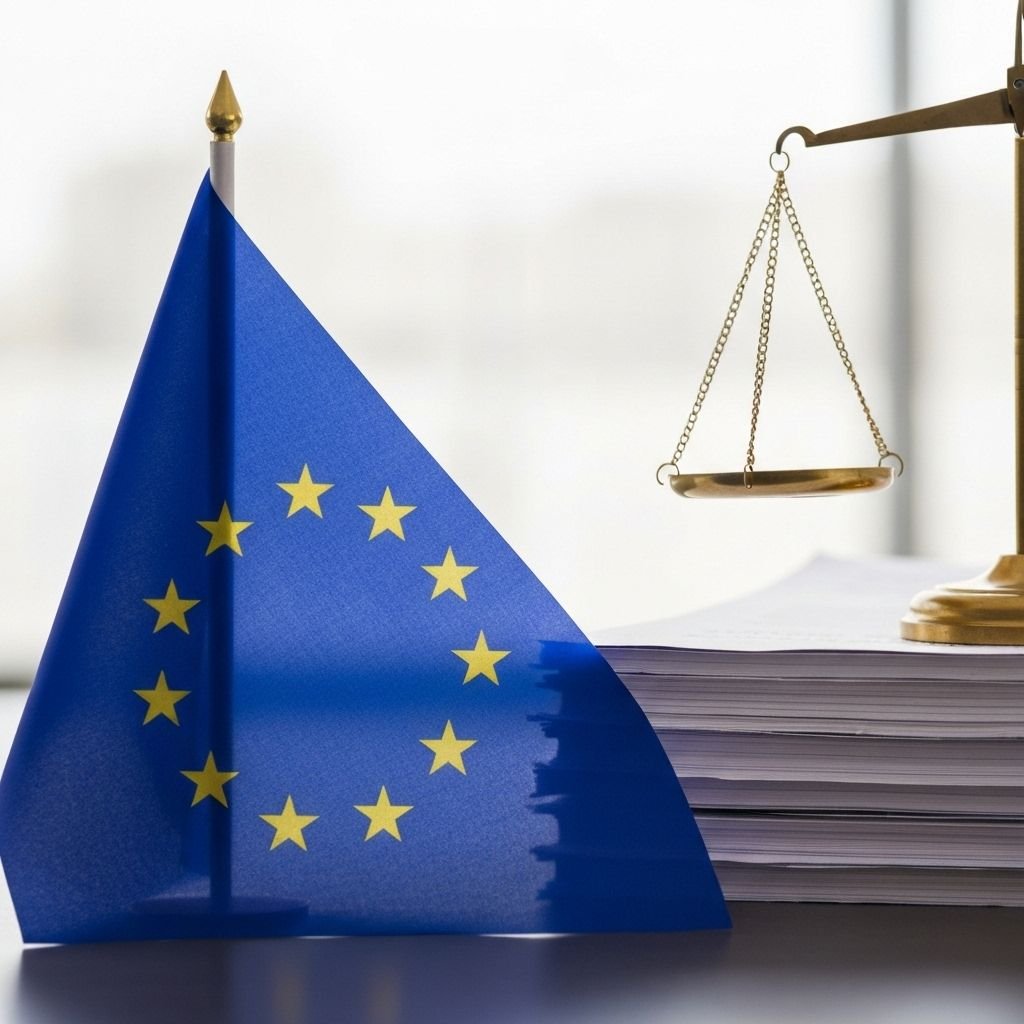In a landmark achievement for international cooperation and AI governance, the United States, United Kingdom, and European Union have signed the world's first legally binding international treaty on artificial intelligence. The Framework Convention on Artificial Intelligence, Human Rights and Democracy represents a historic milestone in establishing global standards for responsible AI development and deployment.
Treaty Overview and Core Principles
The treaty, negotiated over 18 months by international legal experts, AI researchers, and policymakers, establishes fundamental principles for AI governance that prioritize human rights, democratic values, and social welfare. The agreement creates binding obligations for signatory nations while providing flexibility for implementation based on national legal frameworks.
The core principles outlined in the treaty include:
- Human dignity and fundamental rights protection
- Transparency and explainability in AI decision-making
- Accountability and liability frameworks
- Non-discrimination and fairness
- Data protection and privacy
- Democratic oversight and governance
Binding Obligations for Signatory Nations
Unlike previous non-binding AI ethics guidelines, this treaty creates enforceable legal obligations. Signatory nations must establish national AI governance frameworks within 24 months, implement regular auditing systems for high-risk AI applications, and create mechanisms for cross-border cooperation in AI incident response.
Dr. Elena Vasquez, who served as lead negotiator for the EU delegation, explains: "This treaty represents a fundamental shift from voluntary guidelines to binding international law. Nations that sign this agreement are making a legal commitment to their citizens and the international community to develop AI responsibly."
High-Risk AI Applications and Regulations
The treaty specifically addresses high-risk AI applications that could significantly impact human rights or democratic processes. These include:
- AI systems used in criminal justice and law enforcement
- Healthcare diagnostic and treatment AI
- Educational assessment and admission systems
- Employment and HR decision-making tools
- Social welfare and benefit distribution systems
- Critical infrastructure management
For these applications, the treaty mandates rigorous testing, human oversight requirements, and regular algorithmic audits to ensure fairness and accuracy.
International Cooperation Mechanisms
The treaty establishes the International AI Governance Council (IAGC), a new multilateral body headquartered in Geneva. The IAGC will oversee treaty implementation, facilitate information sharing between nations, and coordinate responses to AI-related incidents that cross international borders.
The council will have several key functions:
- Monitoring compliance with treaty obligations
- Facilitating technical cooperation and knowledge sharing
- Mediating disputes between signatory nations
- Updating treaty provisions as AI technology evolves
- Coordinating international AI incident response
Industry Response and Compliance Requirements
The treaty's impact on the AI industry is significant, with major technology companies already announcing compliance initiatives. Companies operating in signatory nations must implement new governance structures, enhance transparency in AI development, and establish clearer accountability mechanisms.
Microsoft President Brad Smith commented on the treaty's impact: "This international framework provides the clarity and consistency that the AI industry needs to develop responsible technology at scale. We welcome these standards and are committed to full compliance."
The treaty requires companies developing high-risk AI systems to:
- Conduct comprehensive impact assessments
- Implement human oversight mechanisms
- Maintain detailed documentation of AI development processes
- Establish clear lines of accountability
- Provide regular compliance reports to national authorities
Protection of Fundamental Rights
One of the treaty's strongest provisions concerns the protection of fundamental human rights in AI development and deployment. The agreement explicitly prohibits AI systems that engage in mass surveillance, social scoring, or manipulation of human behavior without consent.
The treaty also establishes strong protections for vulnerable populations, including children, elderly individuals, and people with disabilities. AI systems that interact with these groups must meet enhanced safety and ethical standards.
Democratic Governance and Transparency
The treaty emphasizes the importance of democratic oversight in AI governance. Signatory nations must ensure public participation in AI policy development and provide citizens with meaningful recourse when affected by AI decisions.
Key transparency requirements include:
- Public disclosure of government AI use in decision-making
- Clear notification when individuals interact with AI systems
- Accessible explanations of AI decision-making processes
- Regular public reporting on AI system performance and impact
Economic Implications and Trade Considerations
The treaty includes provisions to prevent AI governance standards from becoming trade barriers while maintaining high ethical standards. A mutual recognition framework allows signatory nations to accept each other's AI compliance certifications, facilitating international AI trade and development.
Economic analysts predict that the treaty will create a "Brussels Effect" for AI governance, where companies worldwide adopt the highest standards to access markets in signatory nations. This could accelerate global adoption of responsible AI practices beyond the treaty's immediate scope.
Implementation Timeline and National Adaptation
The treaty enters into force six months after ratification by all three founding signatories. Each nation has 24 months to establish compliant national legislation and regulatory frameworks.
Implementation phases include:
- Phase 1 (0-6 months): Treaty ratification and institutional setup
- Phase 2 (6-18 months): National legislation development
- Phase 3 (18-24 months): Regulatory framework implementation
- Phase 4 (24+ months): Full compliance and enforcement
Challenges and Criticisms
While broadly welcomed by civil society groups and AI ethics advocates, the treaty faces some criticism. Technology industry representatives argue that certain provisions may slow innovation, while some academics question whether the enforcement mechanisms are sufficient.
China and Russia, notably absent from the initial signing, have criticized the treaty as reflecting Western values and potentially limiting technological sovereignty. However, diplomatic sources suggest that several other nations, including Japan, Canada, and Australia, are considering joining the framework.
Global Impact and Future Expansion
The treaty includes provisions for expansion, allowing other nations to join the framework through an accession process. The IAGC will evaluate potential new members based on their commitment to the treaty's principles and their capacity to implement its requirements.
Civil society organizations have praised the treaty as a model for global cooperation on emerging technologies. Amnesty International's technology policy director stated: "This treaty demonstrates that international cooperation on AI governance is not only possible but essential for protecting human rights in the digital age."
Enforcement Mechanisms and Dispute Resolution
The treaty establishes several enforcement mechanisms, including peer review processes, compliance monitoring, and dispute resolution procedures. While it doesn't include trade sanctions, non-compliance could affect a nation's standing in the international community and its access to cooperative AI research programs.
The dispute resolution mechanism provides for mediation through the IAGC, with options for arbitration in cases of serious non-compliance. This approach balances sovereignty concerns with the need for effective enforcement.
Research and Development Implications
The treaty includes provisions to support responsible AI research and development. It establishes funding for international AI safety research, creates mechanisms for sharing best practices, and promotes collaboration on AI governance challenges.
Universities and research institutions in signatory nations will benefit from enhanced cooperation opportunities and access to shared resources for AI ethics and safety research.
Future of AI Governance
The Framework Convention on Artificial Intelligence represents the beginning of a new era in international AI governance. As AI technology continues to evolve rapidly, the treaty's adaptive mechanisms will be crucial for maintaining relevant and effective governance standards.
The treaty's success will likely influence future international agreements on emerging technologies and could serve as a model for governance frameworks in areas such as biotechnology, quantum computing, and space technology.
Conclusion
The signing of the world's first legally binding international AI treaty marks a historic moment in the governance of artificial intelligence. By establishing clear standards for responsible AI development while preserving space for innovation, the treaty provides a foundation for building public trust in AI technology.
As nations work to implement the treaty's requirements, the international community will be watching closely to see whether this framework can effectively balance the promotion of beneficial AI innovation with the protection of human rights and democratic values.
The treaty's ultimate success will depend on the commitment of signatory nations to its principles and their ability to adapt its provisions to rapidly evolving AI technology. If successful, this agreement could serve as a model for international cooperation in governing other emerging technologies that will shape humanity's future.



